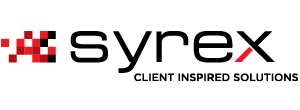Ralph Berndt, Sales and Marketing Director at Syrex.
South African organisations have been looking at deploying hybrid or multi-cloud environments as one of the ways to digitally transform operations and provide an enabling environment for their distributed workforce to remain productive.
And even though more employees are returning to the office, a mindset shift has occurred with cloud-based systems here to stay.
However, ensuring the relevant data gets migrated securely and stays protected in this new landscape form part of the new strategic imperatives that must be in place.
Central to embracing a hybrid or multi-cloud operating model is gaining an understanding of what must be shifted and what must remain in private data centres. This requires a cloud readiness assessment designed to highlight all aspects of the network, security and authentication layers that must be considered in the transition. Many companies think lifting and shifting to the cloud is as easy as copying and pasting data and applications. But it is significantly more complex than that.
Not only is cost a factor with going the hyperscaler route being an expensive proposition, but organisations do not want to lose out on the investments they have already made in their current infrastructure whether on hardware or software levels. Sure, the transition from a local file and print server to the likes of Microsoft 365 might not be that complex and it ticks a lot of the security boxes by introducing security like multi-factor authentication (MFA) from Microsoft into the equation. But there are still other third-party applications and systems that must be considered.
The scenario at each company is unique. There is no universal approach that applies to every business. Some organisations are experimenting with storing multiple assets in multiple locations and then deciding on which one is fit-for-purpose. But this is not cost-effective. A cloud readiness assessment can add significant value to the process before any migration takes place by accounting for the business, its data and hardware environment, and the application real estate. Once that is done, and the business and technology leaders understand what to move, then things like authentication, network management, MFA and Zero Trust can be leveraged.
When the Zero Trust ‘phase’ is achieved, only then can the organisation effectively orchestrate into SD-WAN, hybrid MPLS, and SASE to give users a seamless experience. This will also account for high availability and disaster recovery. So, while the employee can still work from any geographic location as they would normally do in the office, the grind happens at the back end.
